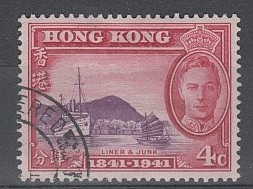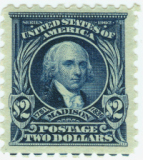- What are my options for storing and displaying my stamp collection?
- What is a stockbook?
- What are the differences between stockbooks?
- What are the pros and cons of stockbooks to display my collection?
- Who are the major manufacturers of stockbooks?
- Who helped write the stock pages section?
- What are stock pages?
- What type of stock pages are available?
- What should I look for in a stock page?
- What are the advantages of stock pages
- What are the disadvantage of stock pages?
- What are my options if I want to use album pages?
- how do I mount the stamps on the pages?
- What are the advantages of album pages?
- What are the disadvantages of album pages?
- Can I use my computer to design my own pages?
- What are good resource if I want to use album pages?
What are my options for storing and displaying my stamp collection?
Collectors have a number of options for safely storing and displaying their stamp collection. The most popular options are stockbooks, stockpages in binders, pages in a binder (or album), pages in boxes, or approval cards (like a dealers '102' card)
Top
Stockbooks
What is a
A stockbook is a book containing a fixed number of hard cardboard pages. Affixed to each page are a 8-10 strips to hold stamps in place.
Most stockbooks have strips on both sides of the cardboard. To prevent stamps from snagging on when the pages are turned, most stockbooks have an interleaf between each page.
Top
What are the differences between stockbooks?
The primary differences are cover material, number of pages, colour of pages, type of strips, type of interleaf, and method of binding:
Cover Material can be rigid or padded, with a dull finish, a leather-like finish (leatherette), or real leather. Padded covers and leather covers are the more expensive than a rigid, leatherette stockbook
Stockbooks usually come in 8, 16, 24, or 32 pages. Note that most manufacturers advertise the number of sides, not the number of hard cardboard pages. So a stockbook advertised as a '16 page' stockbook, usually has 8 double sided cardboard pages.
Colour of pages are usually white or black. Black pages are more expensive, but many collectors feel the stamps look better on a black background.
Stockbook strips are usually either glassine or clear. Clear strips are more expensive, but have the advantage of not distorting the view of the stamp.
Type of interleaves vary by number (single or double interleaving), and material (glassine or clear). Double interleaving provides further protection for the stamps. The material choice again is a function of how easy it is to view the stamps through the interleaf.
Binding methods are run from the less expensive rigid hinged pages (through some sort of reinforced tape, for example), up to a more expensive double linen hinged pages. Double linen hinged pages are worthwhile for larger stockbooks, as it helps the pages lie flat at all times.
Based on these types, a continuum of stockbooks can be found. At the frugal end is a 8 page (16 side) stockbook with a rigid, leatherette cover, white pages with glassine strips, single glassine interleaving, and rigid hinges. At the other end of the spectrum is a 32 page (64 side stockbook) with a padded leather cover, black pages with clear strips, double clear interleaving, and double linen page hinging.
Top
What are the pros and cons of stockbooks to display my collection?
The biggest advantage of stockbooks is that you can rearrange the stamps easily as you add more stamps to your collection. There is no need for large gaps as in a pre-printed paper album, as it is relatively easy to move stamps around and make room for new aquisitions. Stockbooks are also relatively inexpensive ($18CDN for a basic 16 page (32 side) stockbook where I live.)
One disadvantage of stockbooks is that there is not any space for writing up your collection. To work around this problem, some collectors write information on small slips of paper, and put the paper behind the stamp, or on the next row.
Another disadvantage of stockbooks is that if you ever accidentally drop the book, many of the stamps could fall out and get damaged or mixed up.
Top
Who are the major manufacturers of stockbooks?
Lighthouse, Stanley Gibbons, and Safe make stockbooks which are available all over the world.
Subway Stamp Shop in the USA manufactures the G&K line of stockbooks.
In Canada, Unitrade and Associates imports a Dutch stockbook under their own Unitrade brand.
Top
Stock Pages
Who helped write the stock pages
Glad you asked! Thomas E. Harley, Sr. provided much of the content for this section. Thanks Tom!
Top
What are stock pages?
Stockpages are individual loose leaf pages with clear plastic strips to hold your stamps. Each page can have anywhere from a single strip (essentially a pocket to which covers the entire page) to eight strips per page.
Stock pages are usually stored together in a binder. The better pages have multiple holes on the left margin, so they can be used in a wide variety of binders.
Top
What type of stock pages are available?
Usually, the pages are black plastic, and double sided. That is, there are strips on both sides of the page.
However, one can also find clear pages, which are single sided. They are great for items where you need to see both sides, such as PNC's with back numbers, booklets (so you can see the cover) or covers with postmarks on the back.
There are also manila paper pages with manila strips, but these are usually restricted to storing duplicates, since it is impossible to see the entire stamp.
The pages come with any number of strips from 1-8 per side. There are also special pages for phone cards, booklet strips, and booklet panes.
A unique feature of the Prinz Plus page is that they have a smaller strip below each row. The purpose of this strip is to store a small piece of paper containing a description of the stamps above.
Top
What should I look for in a stock page?
Not all stock sheets are alike. Some cheaper pages have strips that can come loose, dumping your stamps. Some have rough edges that can damage stamps upon insertion. The better pages have rounded edges, which reduce the chance of damage when one inserts the stamps.
Sometimes the strips are not sealed well (due to an error in manufacture), which tends to allow the stamps to shift in position in the pockets, or worse, fall through the bottom of the strip.
There is also a wide variety of the thickness of the actual page. The CWS page (available in Canada) is very thick, which "may" protect the stamp better, but makes the overall binder very bulky. By contrast, the Vario page is much thinner.
There can also be a difference 'gloss' of the page. The CWS page is very glossy black, whereas the Vario page is more of a matte black finish.
Top
What are the advantages of stock pages
Stock sheets can be a lot better than an album when you have to see more than just the front of the piece. There is also less chance of finger prints,or damage by some one looking at your collection.
It is also much easier to include stamps and covers in your collection, as you can mix pages with many strips (for single stamps) with pages with two pockets (for covers), four pockets (for blocks)
Top
What are the disadvantage of stock pages?
The main disadvantage of stock pages are similar to stock books. It is difficult to write much about your collection, and there is the risk of jumbling your collection if you ever drop your pages.
Top
Album Pages
What are my options if I want to use album
The first thing to decide is whether you'll use pre-printed album pages or blank album pages. Pre-printed pages have a space marked out for each stamp. Blank album pages are either totally blank, or have a faint quadrille background to help you lay out stamps.
Top
how do I mount the stamps on the pages?
For used stamps, the cheapest way to effectively mount stamps is the hinge. You're better off using a stamp mount for your mint stamps, or better used stamps, in order to give them a little more protection. In the case of Mint Never-Hinged stamps, you'll need to use a mount to preserve the gum on the back of the stamp.
Top
What are the advantages of album pages?
Album pages are usually less expensive than stock books or stock pages. They also give the collector more room for writing notes about the stamps on the page (referred to as "writing up" the collection.)
Top
What are the disadvantages of album pages?
Pre-printed albums can get very expensive over time. It can also be frustrating when you have stamps in your possession which do not have a defined space in the album. The more you specialize, the more a pre-printed album will fail to meet your needs. In these cases the extra stamps must be mounted in the margins, or on a separate blank page.
It is also more difficult to move your stamps around on the page once they are mounted. One usually has to write up a new page if one needs to rearrange things a lot.
Top
Can I use my computer to design my own pages?
Yes! There are many options here. Using programs like PageMaker, Visio, or even Word or Powerpoint, you can draw borders for the page, frames for each stamp, and add descriptive text as you see fit.
Here's a sample page in pdf format produced by Stamporama member Jeral Standridge, showing an attractive page border and stamp illustrations.
Here's another sample in word format showing how descriptive text can be added to the page.
Top
What are good resource if I want to use album pages?
A good source for inexpensive pre-printed album pages is Bill Steiner's web site
A great book to read about arranging and writing up a collection on pages is How to Arrange and Write Up a Stamp Collection, by Stanley Phillips and C. P. Rang. It's out of print, but available through dealers or ebay.
Top


